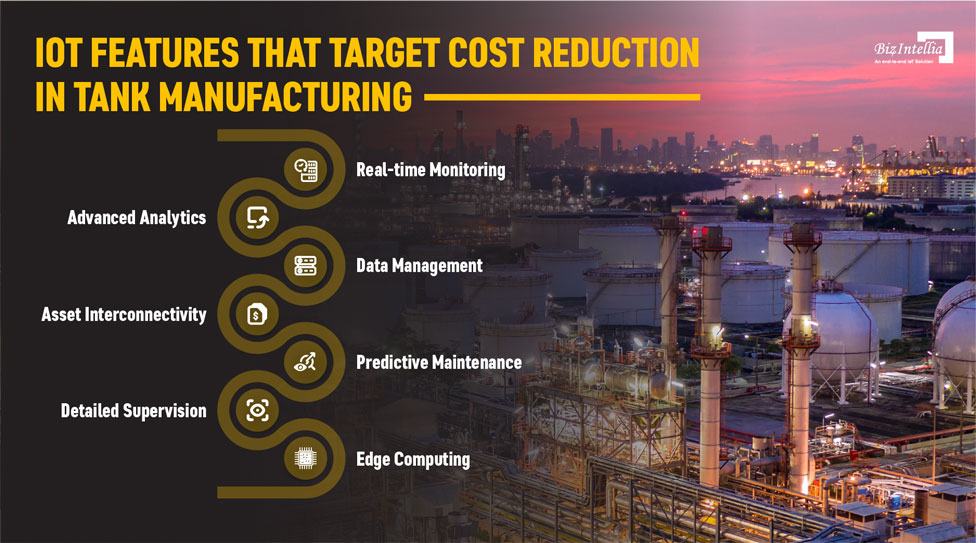Storage tanks are essential to process manufacturing. They can be used in the chemical, petrochemical, and mining industries, as well as agriculture and agriculture. Storage tanks come in many sizes and shapes. Their contents vary greatly from liquids and chemical fluids to bulk solids such as cement, aggregates, and cereals.
However, tank level monitoring is essential for any industrial operation regardless of the application. Overfills can lead to material and production losses and damage to the silo. In addition, spilling hazardous materials tanks could have devastating environmental effects and associated clean-up costs and fines. Failure to replenish feedstock tanks on time can also lead to stock shortages, resulting in delayed production or delivery.
IoT in Tank Manufacturing
The Internet of Things technology transforms the tank manufacturing industry by automating processes. The tank level monitoring solutions market will grow at a 6.9% CAGR by 2025. This is due to the increasing demand from the tank manufacturing industry for smart tank level monitoring systems. IoT also enables technology in one of the most fundamental industries: tank and storage. Its high-end functionality and revolutionary concepts make it possible to use IoT.
The smart tank manufacturing solution enables industries to
- Gain real-time insights
- A better understanding of business risks
- Identify optimization strategies
- Transparency into inventories
- Quick decision-making
With the help of IoT technology, managers can simplify their functionalities and target a data-driven approach to carrying out industrial processing. Let’s understand better how IoT-based level monitoring solutions can help reduce the cost of tank manufacturers.
IoT Features that Target Cost Reduction in Tank Manufacturing

1) Real-time Monitoring
IoT-based tank monitoring solutions can be deployed cost-effectively and are in a ready-to-use state. They come with built-in advanced algorithms that help produce accurate results. An IoT-powered solution comprises sensor abilities that extract data in real-time and trigger alerts for the managers for seamless operability. Real-time monitoring benefits industrialists with on-spot decision-making, improved outcomes, and comparable insights for business growth.
2) Advanced Analytics
The sensors installed on oil and diesel tanks collect relevant information and transmit it through gateway connectivity. This allows for easy access to the data. It simplifies management by giving the user access to data and other information about the oil/diesel tank. Advanced algorithms allow for better data analysis and result-based decisions. This results in increased productivity and better decision-making, which will lead to greater business growth. Managers can use IoT-enabled advanced analysis to make better business decisions and increase productivity.
3) Data Management
With the lesser people aware of modern techniques, it is becoming quite difficult to use conventional stock methods for survival. The introduction of IoT in industries is taking manufacturers by surprise as it provides automated data management. It enables the software to keep a recorded check on every activity the factory equipment performs or tank storage capacities. This simplifies the industrial tasks and allows the managers to focus better on the business growth stats. The Internet of Things is a smart technology created to make industries smart in all aspects. With huge data being generated every day, it has become mandatory to involve machine-based operability for seamless and error-free outcomes.
4) Asset Interconnectivity
The integration of IoT in asset management is about making your systems smart enough for self-correction and taking predictive action by analyzing the data. IoT can be integrated into tank manufacturing industries that constantly need asset monitoring solutions. It continuously monitors every detail of its asset, including its current location, value, condition, and work status. It works without the need for human intervention. A combination of various sensors and technology can help optimize inventory and automate all business processes, which will result in faster operations and better efficiency. Industries can cut operational costs by using IoT asset management software to generate multiple sources of revenue.
5) Predictive Maintenance
Businessmen are making great strides in their industries, particularly in the tank manufacturing sector, using IoT technology and advanced concepts. This technology allows them to succeed, covering all domains such as supply chain, tank level checks, etc. Advanced data management techniques and analytics are enabling everything to be possible. This allows business officials to monitor predictive maintenance and identify asset flaws. The sensor-based information allows authorities to predict maintenance schedules and decrease operational and maintenance expenses. It thus contributes to increasing overall profits and rapid progress in the tank manufacturing business.
6) Detailed Supervision
IoT-based tank monitoring enables smart supervision techniques in the industry. The use of sensor devices and gateway connectivity help trace data from the assets and store it in a cloud platform for easy accessibility. It calls for detailed supervision at the managerial end without putting much effort. The authorities can engage themselves better in the user-friendly interface and measure the possibilities of increasing business revenue. The smart solution ensures illustrative reports with detailed insights on the industrial activities where the managers can find loopholes and make appropriate decisions.
7) Edge Computing
Manufacturers need to have real-time insight into their operations using data from the production environment in order to compete effectively. This information is crucial for reducing downtime, improving product quality, increasing factory output, and meeting other business-driven goals. There are too many sensors and devices to rely on manual processes in today's digitally-driven manufacturing environment. Manufacturers must automate the monitoring and response of all systems on the factory floor and the handling of abnormal conditions or issues. Intelligent systems can detect and alert plant operators to problems on the factory floor by receiving immediate feedback through advanced analytics.











